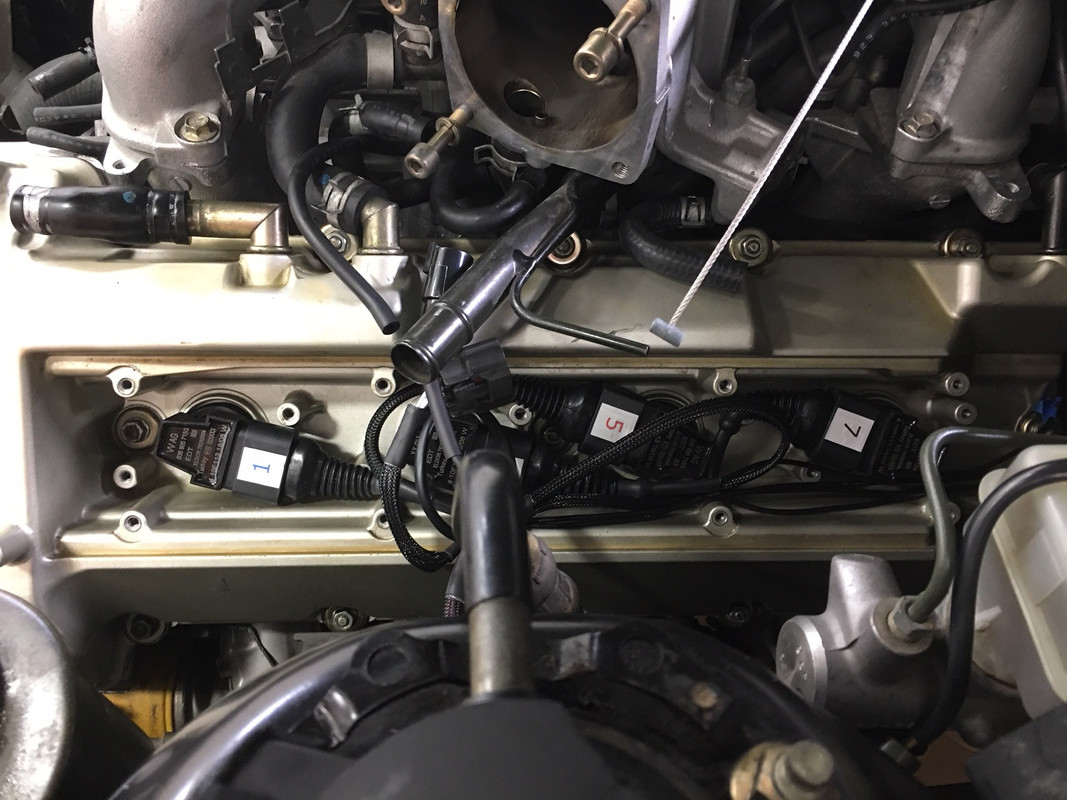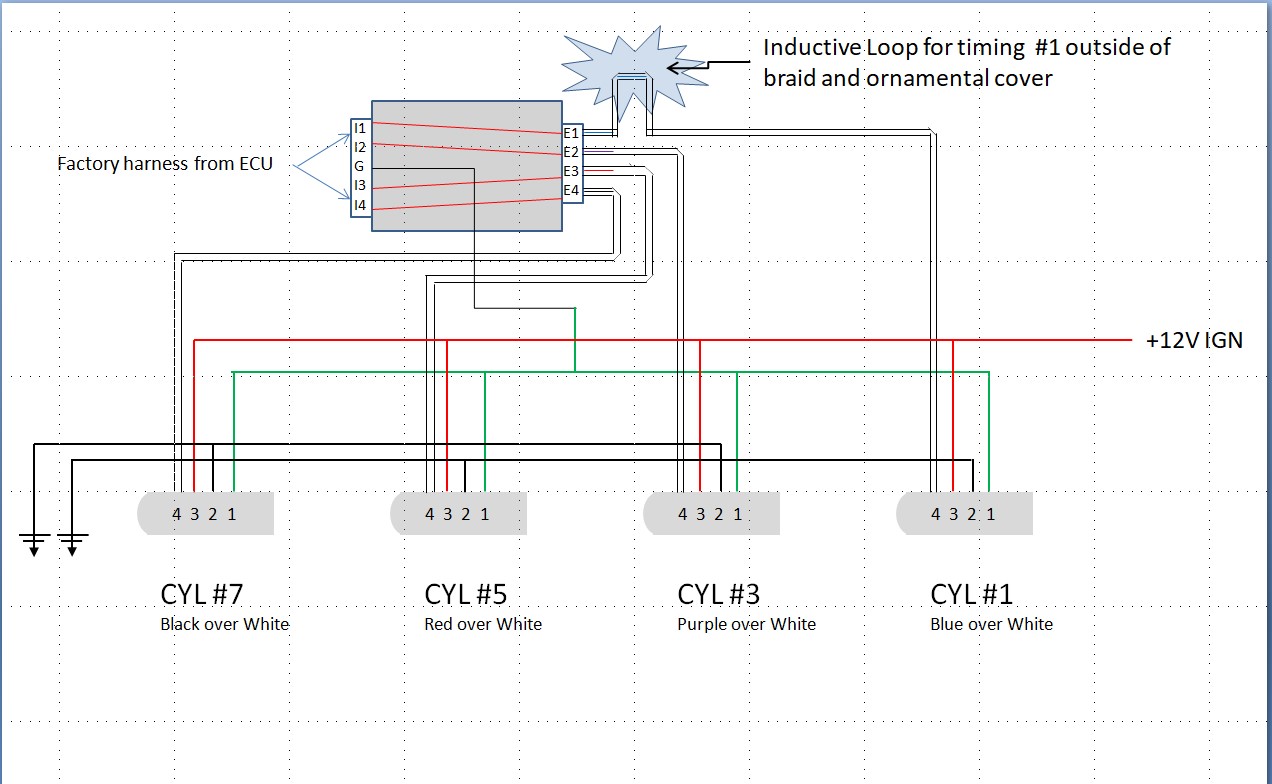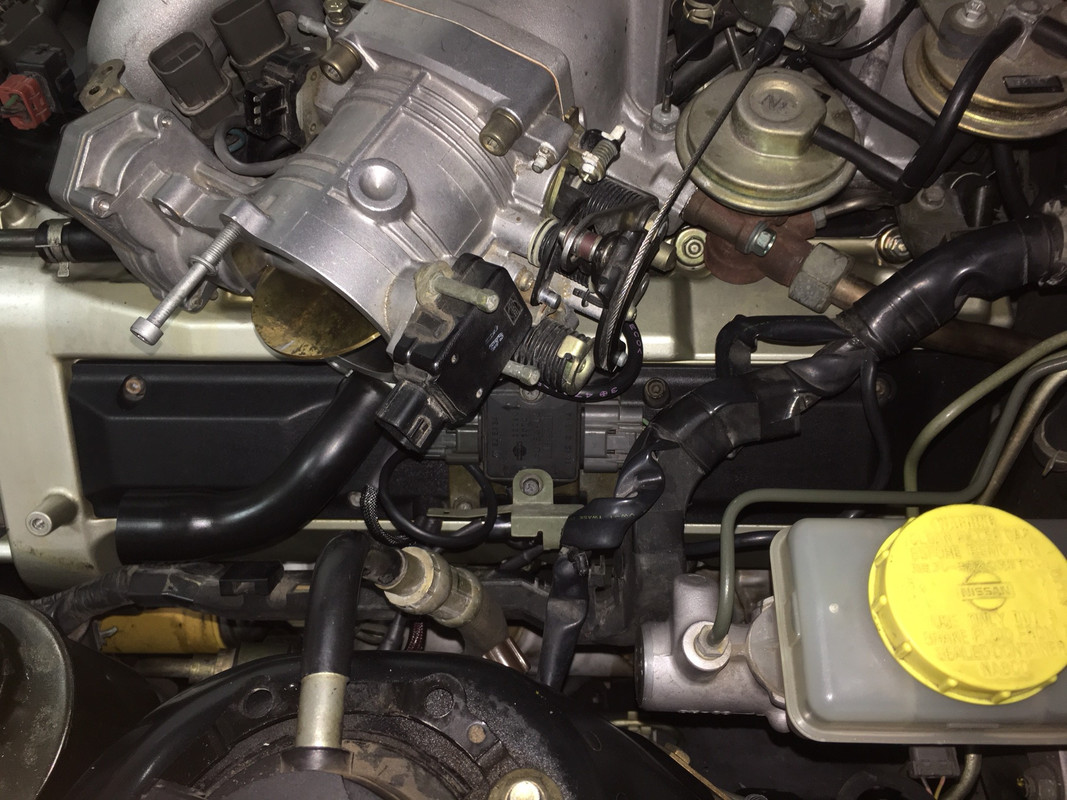The VH45DE came from the factory with 'dumb' CoP packs, meaning the ignitor (really a switching transistor) is external to the coil module. So the VH45DE ignitor (also used on early SR20 DE as an aside) is not needed in a smart coil setup, but there are some harness considerations, more on that in a bit.
Performance VH advertises some kits for this, and I quickly decided on the Volkswagen/Audi Group (VAG) coils due to some previous experience with my A6 Avant. The ubiquitous 'long' Audi coils are too tall to use with the factory VH45DE ornamental covers, and I'm anal about keeping as stock a look (even if it's not....) as possible. So that meant going with the VAG 'shorty' coils P/N 036 905 715F. The deal with these is that they never appeared on cars sold in the US, so you'll likely have to source them from overseas. I took a chance and bought some from fleabay, they look like a genuine article, with most of the correct markings, however I suspect they are also counterfeits, because they all read "WAG" at the top instead of "VWAG". They seem to be working so far, which is only about 150 miles. I haven't noticed any negative side effects, and the off-idle throttle response is a little better.
OK, pictures!
Before:

Centered is the old ignitor, and the ornamental cover. You can also see some of the coil modules subharness "under" the active pipe and secondary TPS. Yeah, Active/TCS Q's are an even bigger pain to work on. Not to mention my '94 which also has the 'air cut' valve under the TB and on top of the ignitor....
My mockup board for laying out the new wire harness (an old valve cover):

The 4-pin grey connector I bought from Wiring Specialties. The 4-pin coil connectors for VAG are all over amazon/fleabay. The black barrel connector (single pin) is 12-ga Deutsch DTHD (got from 'pro-wire USA').
Partially installed after the new vcg and plugs had been replaced:

My wiring schematic:

Pin 1 ECU ground (green)
Pin 2 Engine Ground (Black)
Pin 3 +12v from Ignition switch (Red)
Pin 4 ECU trigger (White with color stripe)
Note that this pinout is specific to the shorty coils! The pinout for the long VAG coils is different. Why on earth they had to change escapes me, but it caused me a lot of wasted time and angst....
Here's what I did to bridge the ECU side 5-pin factory connector to the new set-up:

Remember I like the stock/stealth look....so I gutted an ignitor and soldered straight wires connecting the ECU side to the coil side. Note also the black wire which goes to ECU ground. The 4-pin VAG smart coils have an ECU ground (pin 1 from above), so I needed a way to tie that signal back thru the harness to the ECU ground. Some people would not bother with this step, thinking that to tie the coil's ECU ground to the engine ground is 'good enough'. In my experience signal grounds and power grounds serve different functions, but the choice is yours.
After that photo I also 'potted' in the backside of the ignitor shell with E6000 as an added measure of keeping the firing order from potentially getting screwed up
And the near final product, with the dummy ignitor and ornamental cover installed:

just between the active pipe and the secondary TPS you can see a loop wire. This is the #1 cyl ECU to coil signal, which I intended to use to set base timing with an inductive timing light, but the signal level is too low to trigger my 35 yo craftsman timing light. may work with other models.... I ended up timing it by placing a length of high tension lead between the #6 coil and the #6 plug, and clamping on to that.
Note that using 'method B' on page EF/EC 34 of the FSM, while novel, uses the 12v line, not the ECU trigger. My harness loop attempts to provide a way to use 'method C' on EF/EC 34, but recall that the signal is now ECU level, not transistor level from the ignitor as in the original design.
Anyway, it all works. Will this setup last another 24+ years and 150k+ miles? I doubt it...but at least I should be able to buy replacement coils pretty cheap.....

